“Do The Parents Have Normal Hips” A Right and Wrong Question.
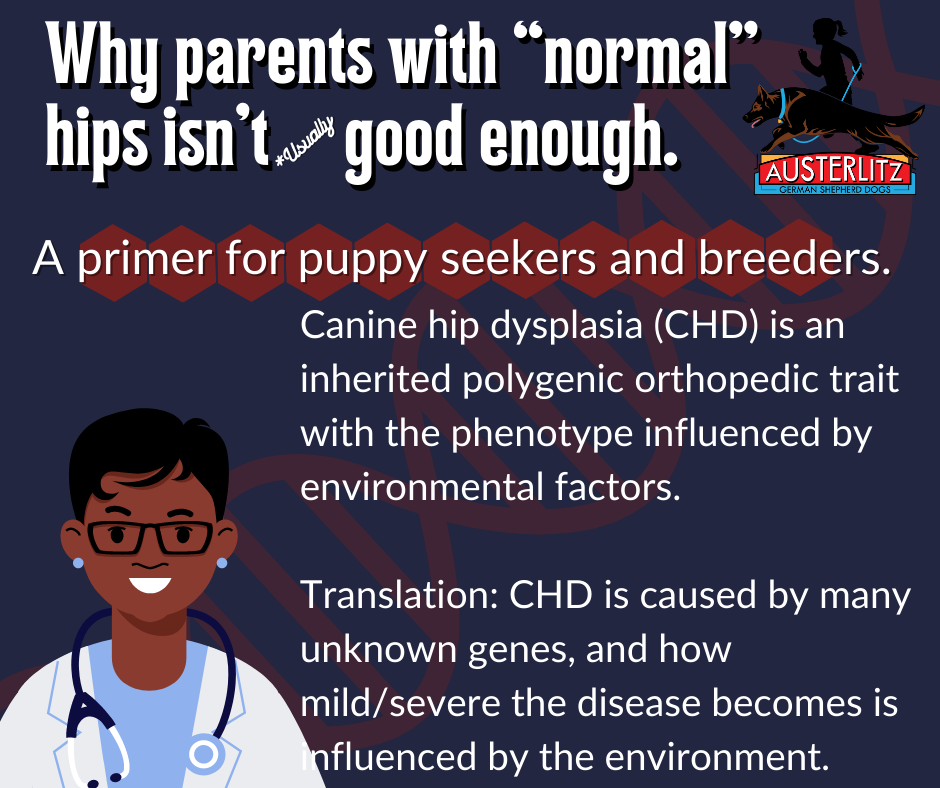
One of the most common questions puppy seekers ask me is “do the parents have normal hips”. This is both a right question and a wrong question. Right because parents with normal hips are important, right because the person at least understands that health testing for the GSD includes hips, and right because they know that it’s the parents and not the puppy that are tested.
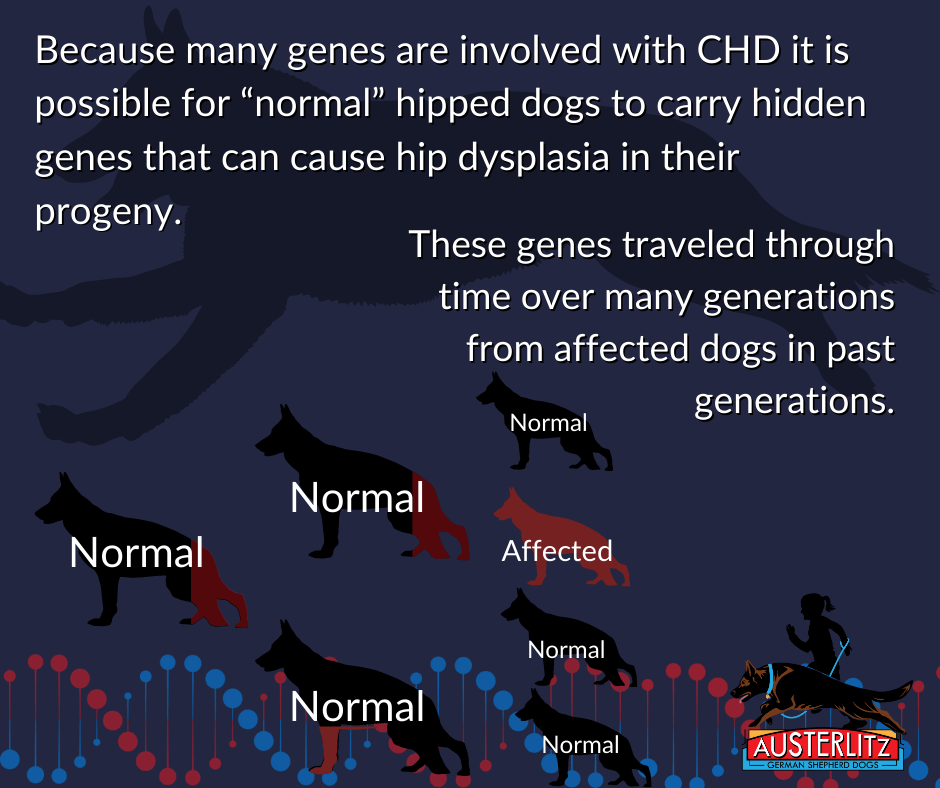
It’s a wrong questions because while having a sire and dam with normal hips is important, there is So…Much….More….that is also important. Because Canine Hip Dysplasia can be carried, hidden, through many generations and it shows up unevenly with some dogs pulling life’s Short Straw and developing this painful and sometimes debilitating disease, there are more dogs to ask about than just the parents.
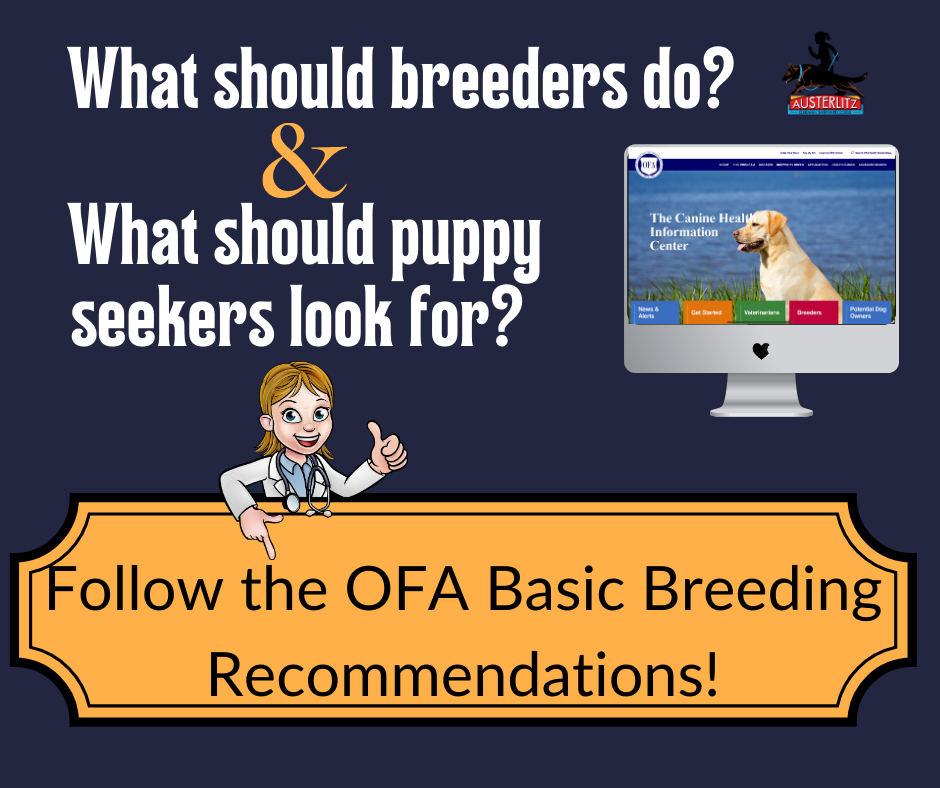
Sadly even some breeders don’t know how CHD occurs, what the risk factors are, and some even focus on blaming owners for their dogs condition (and the environment does play a part) yet alone how to reduce the chances the dogs they produce will inherit this disease. While puppy seekers have an excuse for not understanding all the nuances of breeding, breeders have zero excuse.
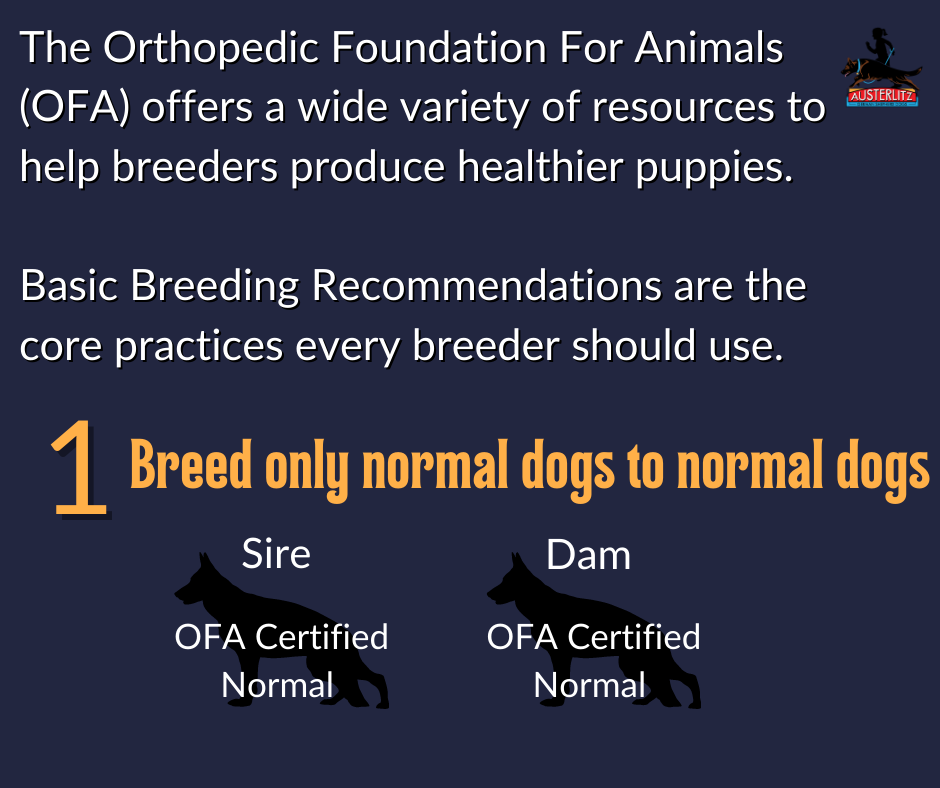
When breeders follow the OFA’s Basic Breeding Recommendations for CHD they can see dramatic improvements in hip health in even typical bloodlines. Until the GSD is close to 100% normal hips we cannot and should not rest in our efforts to apply pressure for hip health in our breeding programs.
Puppy Seekers can dramatically increase the chances of their dog being healthy if they choose such breeders.
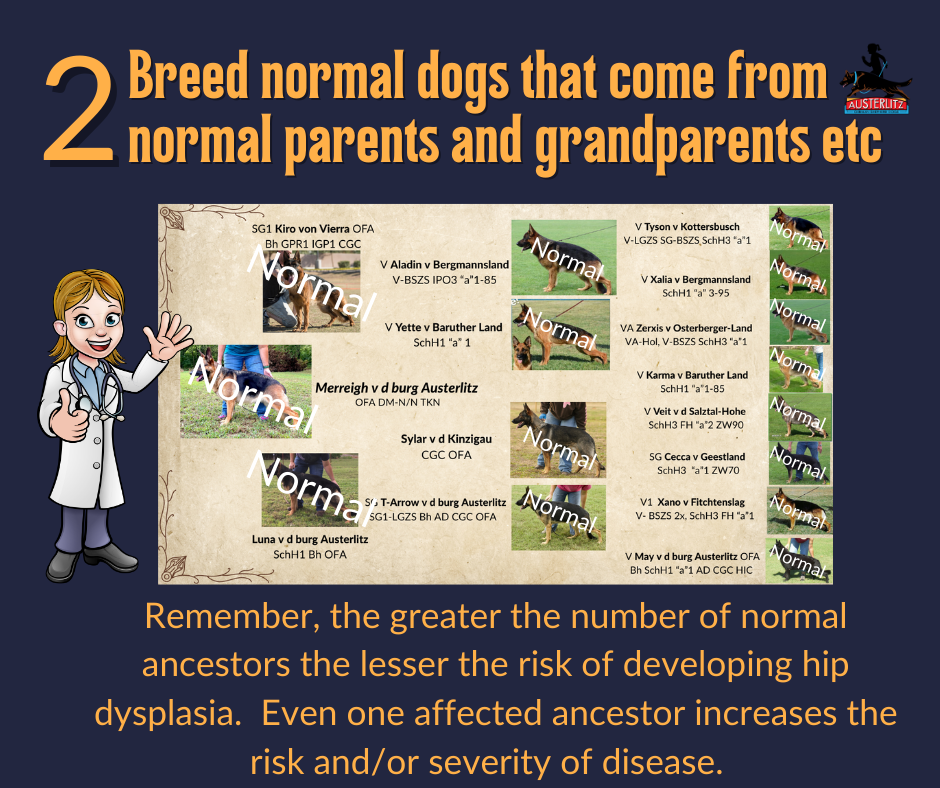
Obviously it’s very important that every litter have a sire and dam with Certified Normal hips. But it’s just as important that all those dogs behind the sire and dam had normal hips as well. This reduces the odds of those sneaky disease genes proliferating a pedigree, unseen, and waiting to cause suffering in the next generation.
Puppy Seekers should ask to see a pedigree, and ask if any dogs in it were affected with CHD.
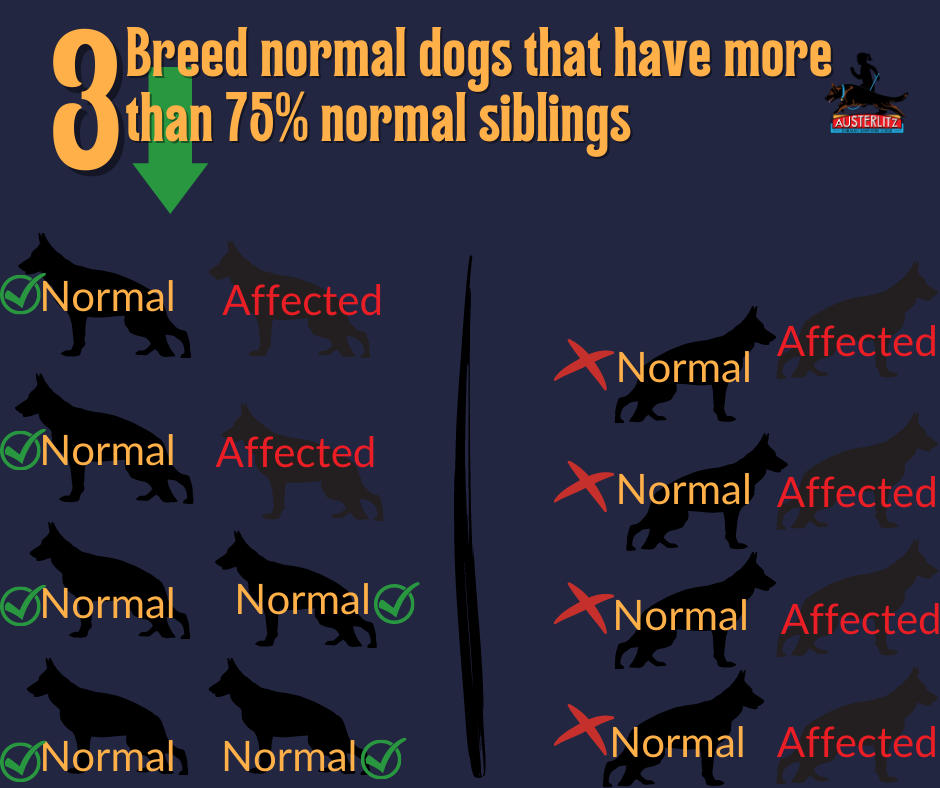
Another overlooked source of hip health hints are the siblings of a breeding dog. The WORST hip producer I ever knew personally was a dog rated OFA Excellent, but the majority of his litter was affected with CHD, as were two maternal aunts.
Conversely, the BEST hip producer I have had in my program was an OFA Fair female (Quinta v Westfork) who had multiple Normal hipped siblings and half siblings.
Puppy Seekers can always ask about siblings or do an OFA Database Search for related individuals.

When choosing among potential breeding dogs and partners breeders should look for dogs with a history of producing more normal progeny and fewer affected progeny than the breed average. To do this breeders must know the average for their breed, something that can be found by anyone on the OFA website. By choosing better than typical hip health producers a breeder can further increase hip health in their program and the breed.
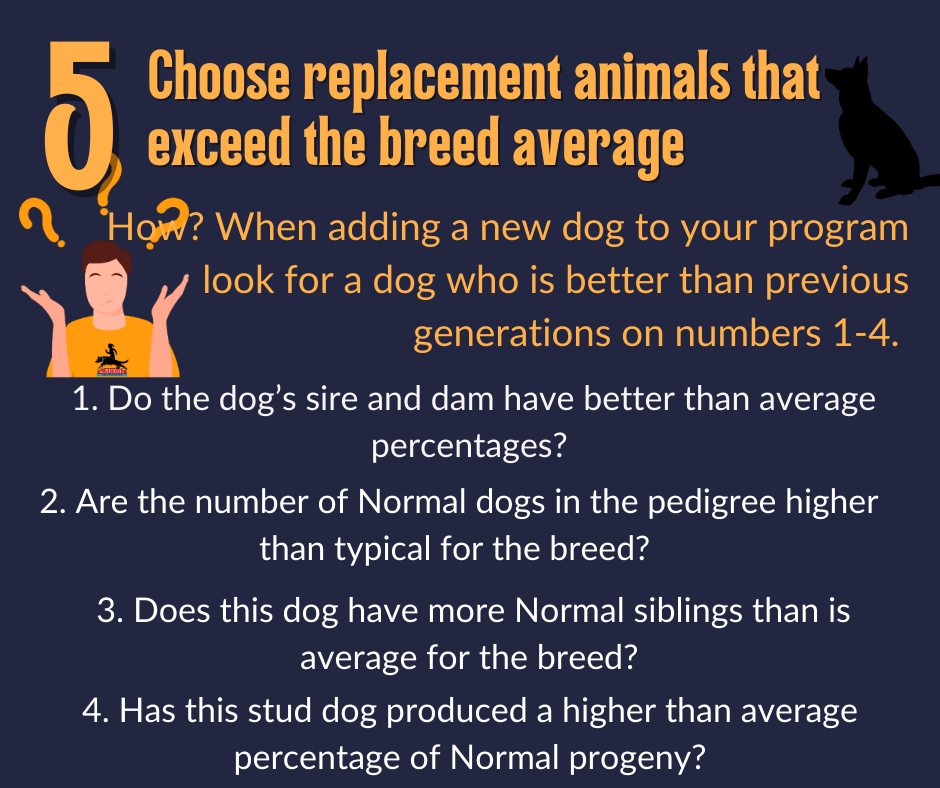
When adding a new breeding dog to a program, the breeder will be wise to consider the previous averages and look for a breeding dog whose sire/dam were better than typical hip health producers, have a higher percentage of normal hipped dogs in their pedigree, and who have a higher than typical number of normal hipped siblings.
When choosing stud dogs avoiding young dogs in favor of older dogs will enable the breeder to have data on hip health production, and this is a good reason to always consider mature stud dogs over up and coming younger dogs.
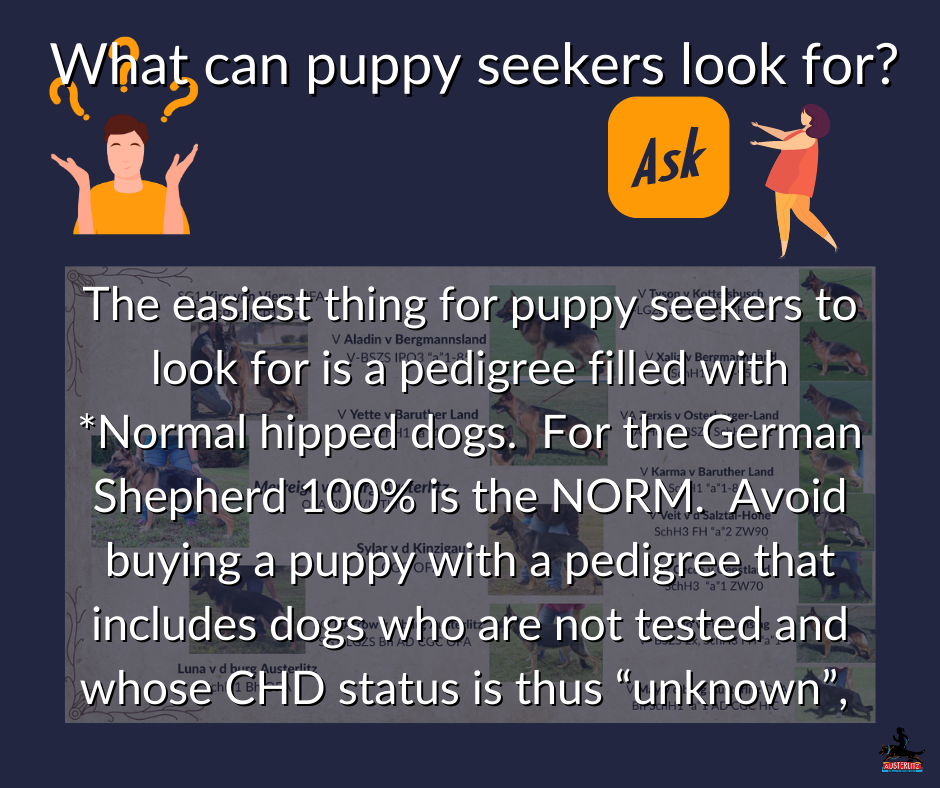
For those seeking a puppy, one of the easiest things to quantify is how many dogs in the pedigree, especially the first four generations, have Certified Normal hips, how many had known CHD, and JUST as important how many have an “unknown” hip health status? Dogs with no official hip health status MUST be considered CHD Affected for both breeder and puppy buyer purposes. Breeders should provide a three or four generation pedigree with the hip rating on it for potential puppy buyers to see.
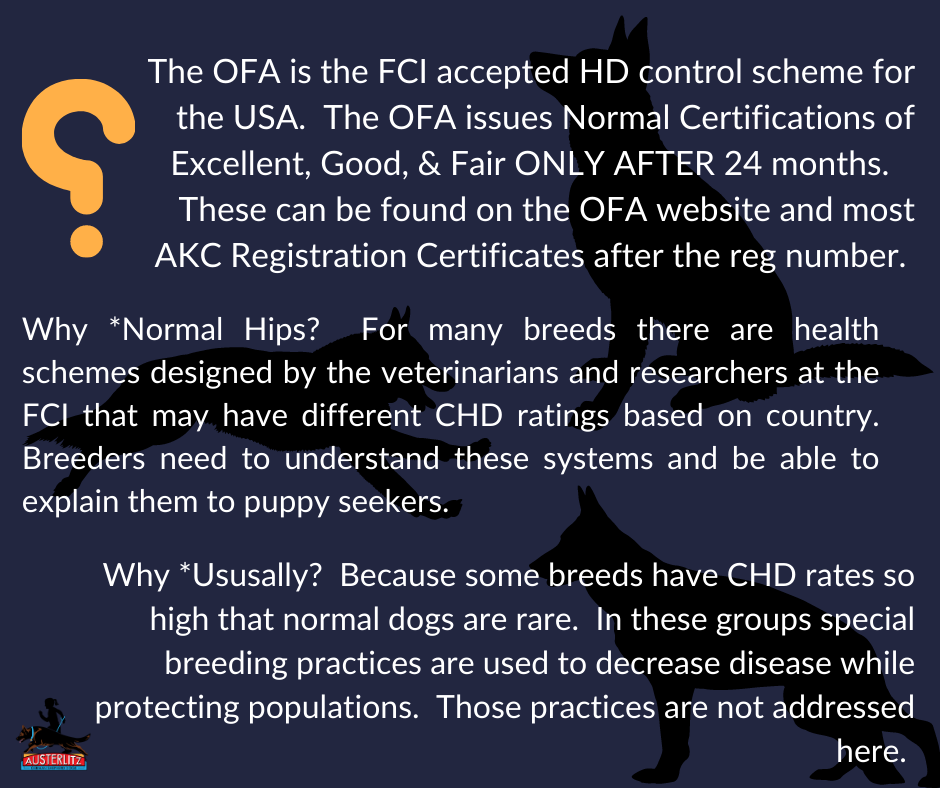
In the USA the OFA is the FCI recognized hip health organization. The OFA ONLY issues breeding certifications AFTER 24 months of age, any preliminary opinion issued prior to 24 months of age is NOT intended for breeding purposes so breeders and puppy seekers should not consider them when making decisions.
Each FCI country will have it’s own scheme, and the SV of Germany has a system that incorporates all of these best practices into a hip health score, so all breeders need to do is know the ZW score of each dog to make hip health breeding decisions and puppy seekers can easily see the CHD risk by knowing the ZW number for the litter. Maybe someday we will have such a system in the USA but until then breeders have to know each item and how to use it in their breeding program.
